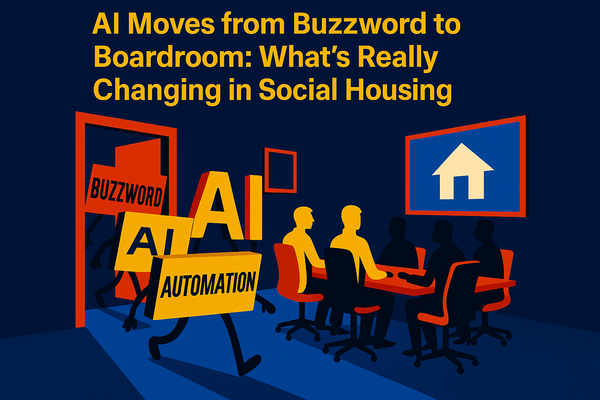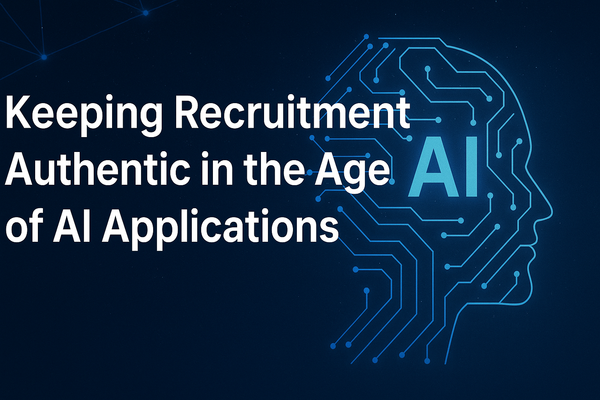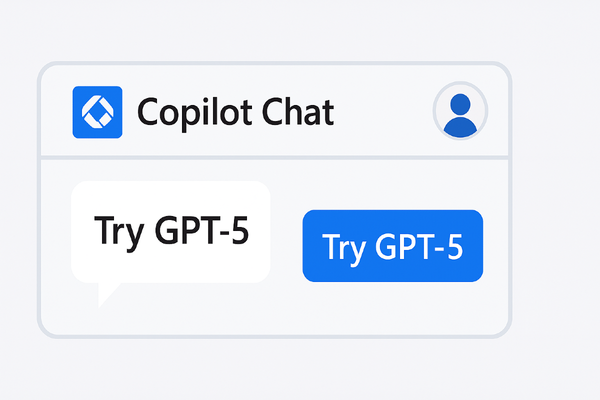AI Meets Culture Shock: Why Social Housing Must Mind the Digital Divide

AI has arrived—but in many corners of the social housing sector, the response is muted, cautious, or even quietly resistant. While technology providers showcase generative tools, predictive scheduling, and chatbot-driven self-service, many housing professionals are still asking, “What does AI actually mean for us?”
The truth is, introducing AI into social housing isn’t just a technical shift—it’s a cultural shock. And if we don’t address it openly and strategically, the sector risks falling behind.
🚧 The Quiet Divide: Innovation vs. Adoption
Talk to younger colleagues, those who’ve grown up with smart devices, adaptive algorithms, and generative AI—and you’ll find excitement, even eagerness. They experiment, prompt, test, and imagine new ways to save time or improve services. But talk to many middle and senior managers, and the picture is very different: AI feels like a distraction from real-world pressures, or a risk they don’t have the space (or energy) to manage.
This isn’t about intelligence or intent. It’s about confidence, context, and culture.
🧠 Culture Eats Technology for Breakfast
The housing sector has always been people-first. It values empathy, service, and social purpose and rightly so. But those values can become barriers if they resist new ways of working. When AI is presented as “the future,” it can feel like a threat to long-standing expertise, systems, and professional identity.
Many seasoned staff fear being replaced. Others fear appearing incompetent if they ask basic questions. Some simply feel that the pressure to do more with less leaves no space to learn something new.
And so, the culture closes in—quietly stalling innovation.
📉 The Consequences of Inaction
While housing teams debate whether AI is relevant, the world moves on. Residents are already using AI daily—via banking apps, voice assistants, and translation tools. Suppliers and contractors are automating logistics, quoting, and diagnostics. If housing providers fail to adapt, they risk becoming digitally out of step with the communities they serve.
Missed opportunities include:
- Faster triage of repairs through predictive tools
- More accessible communication for residents with literacy or language challenges
- Smarter insights into complaints and satisfaction trends
- Streamlined admin freeing up time for frontline service
🧭 Bridging the Divide: It Starts with Understanding
To move forward, we need to reframe the conversation—not as “Should we use AI?”, but “Where might AI quietly help us do better?”
That begins with:
- Normalising curiosity. Everyone should feel safe asking “What does this mean?” without judgement.
- Showing relevance. Examples must be housing-specific, not abstract.
- Creating internal champions. Identify people (regardless of age) who “get it” and give them space to explore and share.
👥 Or… Hire the Change
In truth, not everyone will shift. And that’s okay. But the sector must start bringing in people who are digitally fluent, not necessarily coders or data scientists, but professionals who understand how AI tools can work within housing contexts.
Hiring for cultural diversity in digital fluency is now as important as traditional diversity in background and experience.
AI-savvy hires:
- Ask different questions in meetings
- Challenge outdated processes
- Spot patterns others miss
- Encourage experimentation
These people aren’t a threat to your current team—they’re the bridge to your future one.
🧠 Final Thought: It’s Not About the Tools. It’s About the Mindset.
AI isn’t a passing trend, it’s a shift in how work gets done. But that shift won’t succeed through top-down initiatives alone. It needs a cultural foundation where curiosity is encouraged, skills are shared, and fear is replaced with understanding.
Because in the end, the question isn’t whether AI will change social housing. It’s whether social housing is willing to shape that change, or be shaped by it.



